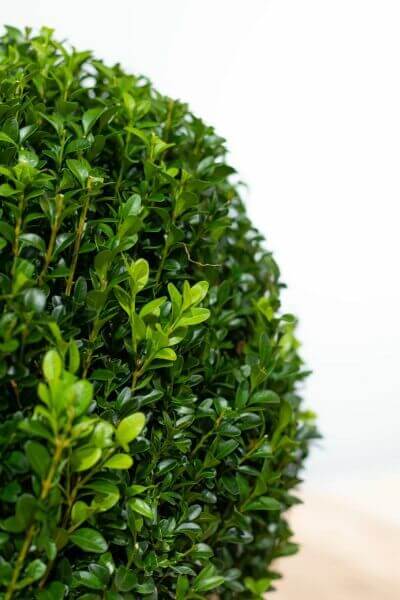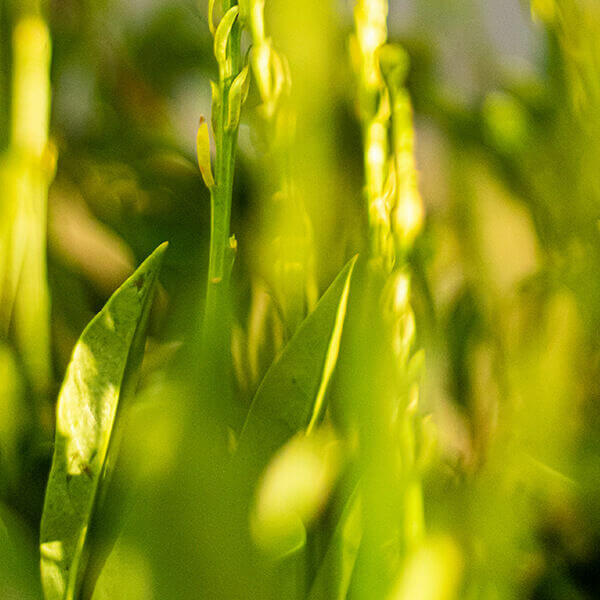Best Hedging Plants For Outdoor Spaces
Best Hedging Plants For Outdoor Spaces
Blog Article
Hedge Plants For Outdoor Layout
Improve your garden's appeal with lush hedge ranges such as Yew (Taxus), Thuja, Laurel, Photinia, and Bamboo, celebrated for their structural stability and environmental advantages.
Yew and Thuja provide evergreen coverage and winter season strength, while Laurel provides quick growth and broad, aromatic leaves.
Photinia includes seasonal charm with its dynamic red foliage, and Bamboo provides a low-maintenance, serene ambiance.
These hedges enhance air quality, reduce noise, and develop tranquil, private spaces.
Appropriate planting, spacing, and upkeep ensure vigorous growth and eco-friendly consistency.
Explore how these rich ranges can raise your garden's appeal and well-being.
Secret Takeaways
Change Your Garden With Lush Hedge Varieties
- Select Yew for its dense, evergreen growth and exceptional durability.
- Opt for Laurel for its fast growth and broad leaves, guaranteeing fast personal privacy.
- Pick Photinia for its lively seasonal foliage, which turns a striking dark red.
- Make use of Bamboo for a low-maintenance, winter-hardy hedge with visual appeal.
- Area plants 2-3 per meter and prune frequently for optimal growth and health.
Popular Hedge Plants
When transforming a garden with lush hedge varieties, it's necessary to consider popular hedge plants such as Yew, Thuja, Laurel, and Photinia due to their distinct qualities and benefits.
Yew (Taxus) is highly esteemed for its longevity and dense, green development, making it a prime option for withstanding landscapes.
Thuja is kept in mind for its evergreen foliage and robust winter season durability.
Photinia adds seasonal vibrancy with red leaves that darken in time, producing dynamic visual appeal.
Laurel offers rapid development and aromatic, broad leaves, suitable for quick privacy.
Additionally, Bamboo is an excellent option for atmosphere, providing a low-maintenance, winter-hardy choice that enhances the garden's visual with its classy, swaying walking sticks.
These selections cater to a range of horticultural requirements and preferences.
Benefits of Garden Hedges
Garden hedges use a plethora of benefits, making them a valuable addition to any landscape. These natural barriers are cost-efficient to carry out and offer considerable wind security, enhancing air blood circulation and adding to noise decrease. The dense foliage of hedges like Thuja and Beech ensures personal privacy by obstructing presence, producing a serene and remote environment.
Hedges also play a crucial function in microclimate regulation, providing a steady environment that fosters plant development and minimizes temperature level fluctuations. Their complex leaf structures filter pollutants, enhancing air quality and contributing to a much healthier garden community.
Furthermore, hedges excel in sound reduction, taking in and deflecting sound waves to lower ambient noise levels. This double functionality of supplying both visual and acoustic personal privacy enhances the general harmony and aesthetic appeal of any garden.
Planting and Upkeep Tips
For an effective hedge, meticulous preparation of the planting location is crucial. Guarantee the soil has correct pH and drain to support strong root advancement.
Area the plants appropriately for the picked species. Water the hedge frequently throughout its preliminary growth stage, adjusting as needed with seasonal modifications.
Carry out a methodical insect control and illness prevention strategy, using chemical or natural treatments when necessary. Routinely examine for aphids, termites, and fungal infections.
Apply mulch to maintain moisture and suppress weeds. Seasonal pruning promotes dense growth and air flow, vital for plant health.
Following these standards will assist you cultivate a lively, well-maintained hedge that enhances the charm of your garden.
Spacing and Trimming Guidelines
Spacing and Trimming Guidelines
Appropriate spacing and cutting are important for cultivating healthy, aesthetically appealing hedges. Appropriate spacing makes sure each plant gets adequate nutrients, light, and air flow.
Follow these standards for ideal hedge maintenance:
- Spacing: Position hedge plants 2-3 plants per meter to encourage robust growth.
- Pruning Techniques: Regular pruning is essential for maintaining desired hedge height and shape. Cut brand-new development in summer season and cut down older wood throughout winter.
- Seasonal Care: Adjust trimming schedules and methods according to seasonal requirements to make sure plant health.
- Hedge Height: Routinely screen and trim to keep the wanted hedge height and accomplish uniform visual appeals.
Abiding by these steps will ensure your hedge grows, boosting both the appeal and functionality of your garden.
Choosing the Right Hedge
Picking the Right Hedge
Choosing the appropriate hedge includes assessing factors such as fully grown height, foliage density, and ecological resilience. Effective hedge plant selection requires comprehending each types' growth characteristics and site-specific flexibility.
For instance, Yew (Taxus) offers exceptional longevity and thick growth, while Thuja is notable for its winter season resilience. In addition, considering upkeep requirements is essential; fast-growing types like Laurel or Privet demand routine trimming, whereas low-maintenance alternatives like Bamboo or Ivy might be more effective for those seeking very little upkeep.
Ecological aspects such as soil type, light accessibility, and wetness conditions ought to likewise guide the selection procedure. This careful method ensures the selected hedges will grow, providing both functional and aesthetic advantages to the garden landscape.
Delivery and Planting Recommendations
To guarantee your hedge plants thrive, they must be provided by specialized couriers and planted quickly upon arrival.
Follow these vital actions for successful planting:
- Soil Preparation: Improve the soil with natural matter to improve drain and nutrient material.
- Planting Depth: Develop a trench twice the width and equal to the depth of the root ball.
- Watering Strategies: Water thoroughly after planting, keeping the soil consistently damp however not filled.
- Mulching: Use a layer of mulch to retain moisture and suppress weeds.
Consumer Assistance and Service
Given the important function of prompt help in horticultural pursuits, our consumer assistance team is available six days a week through telephone, email, and social networks to offer professional suggestions and promptly address any concerns. Their dedication to quick response times ensures customer complete satisfaction by fixing inquiries related to plant health, ideal planting techniques, and maintenance schedules.

Action Time
-------------------
This extensive support group, enhanced by an excellent 9.3/ 10 customer rating, highlights our commitment to improving the gardening experience for every single client.
Frequently Asked Questions
For How Long Does It Consider Hedge Plants to Establish?
Hedge plants normally need one to three years to become completely established, with the precise duration varying by species and growing conditions.
Effective care during this critical period is essential for robust development. Constant watering, alert weed control, and proper fertilizer application are critical in promoting strong root advancement.
For example, fast-growing species like Laurel may develop quicker, while slower-growing ranges such as Yew may take longer. Persistent maintenance accelerates the facility procedure, leading to healthy and thick hedges.
What Are the Best Hedge Plants for Privacy?
The question of the very best hedge plants for personal privacy involves evaluating evergreen and deciduous alternatives.
Evergreen hedges like Thuja, Laurel, and Cypress supply year-round protection, ensuring continuous personal privacy.
In contrast, deciduous hedges such as Beech offer seasonal personal privacy, shedding leaves in chillier months.
Key upkeep ideas for privacy hedges Browse this site consist of routine trimming, fertilizing in spring, and correct spacing-- usually 2 to 3 plants per meter.
Additionally, constant watering and persistent weed removal are important for promoting healthy, dense development.
Can Hedge Plants Draw In Wildlife to My Garden?
Yes, hedge plants can attract wildlife to your garden by offering important advantages like shelter, food, and nesting sites, therefore improving local biodiversity. For example, yew, holly, and laurel are excellent for bring in birds, while ivy supports a variety of pests.
However, it is necessary to keep in mind that there are some disadvantages, such as increased upkeep to manage insects and regular upkeep. Thoroughly selecting and preserving hedge ranges can help balance these disadvantages and advantages, ultimately cultivating a sustainable and lively community in your garden.
Exist Any Flowering Hedge Plants Available?
Yes, there are flowering hedge plants available that can improve the beauty of your garden.
For example, Elaeagnus, likewise referred to as Olive Willow, produces aromatic white flowers in the fall, adding a touch of sophistication.
Photinia, another popular choice, showcases dynamic red leaves that grow into an abundant green, creating a dynamic visual result throughout the seasons.
To make sure these plants thrive, it's necessary to practice correct pruning strategies and seasonal maintenance, such as trimming new growth in the summertime and cutting down in the winter season.
These measures will help maintain the health and aesthetic appeal of your flowering hedges.
How Do I Prevent Insects in My Hedge Plants?
To avoid insects in hedge plants, utilize natural bug control approaches and keep correct hedge care. Present beneficial insects like ladybugs, which prey on harmful pests, to create a balanced ecosystem.
Regularly inspect your hedges for indications of infestation and quickly eliminate any afflicted parts to prevent the spread. Ensure the health of your hedges by applying well balanced fertilizers and supplying appropriate water.
Use mulching to keep soil moisture and proper spacing to decrease plant stress and promote robust development. These practices jointly assist in lessening insect issues and maintaining a healthy hedge.
Conclusion
In essence, picking the best hedge varieties such as Yew, Thuja, and Laurel can transform any garden into a serene sanctuary. These plants offer year-round greenery, boost aesthetic appeal, and offer useful benefits like noise decrease and wind security.
Proper planting strategies, precise spacing, consistent watering, and seasonal cutting are crucial for optimal development.
Trusted shipment services and expert consumer support make sure a seamless experience from purchase to planting, making it simpler than ever to raise your outdoor space.
Garden hedges use a wide variety of benefits, making them an important addition to any landscape. These natural barriers are affordable to carry out and offer substantial wind security, boosting air flow and contributing to sound reduction. The thick foliage of hedges like Thuja and Beech ensures personal privacy by obstructing exposure, developing a secluded and peaceful environment.

Pruning Techniques: Routine pruning is vital for preserving desired hedge height and shape. Cut brand-new growth in summer season and cut back older wood throughout winter.
Report this page